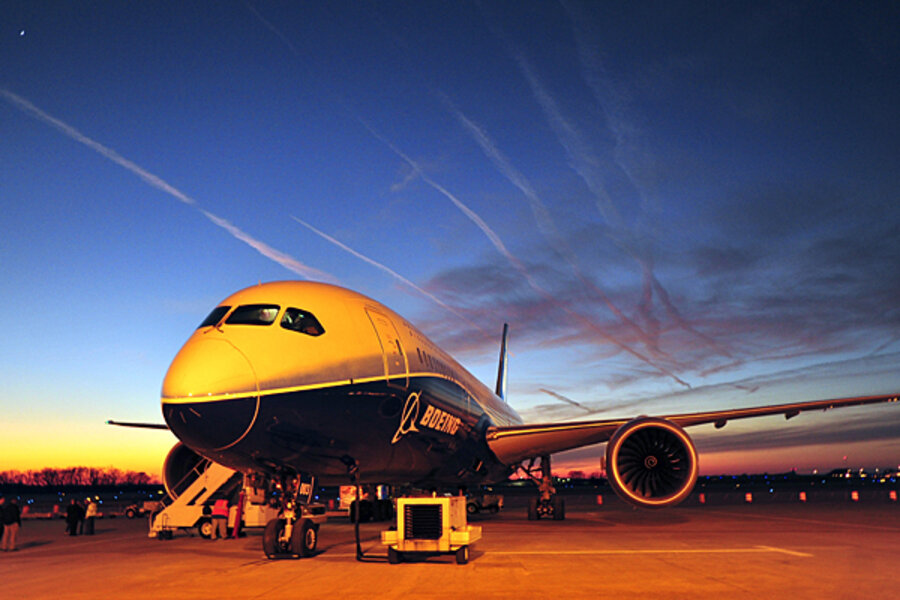Boeing 787 to undergo FAA review. Is electrical power at fault?
Loading...
In its new 787 "Dreamliner," Boeing has brought a new level of fuel efficiency to the skies by borrowing a page from earth-bound hybrids: battery power.
So when the Federal Aviation Administration (FAA) announced Friday it would launch an investigation into the Boeing 787 because of a recent small electrical fire and fuel leaks, it raised a question if Boeing has pushed reliance on electric power too far too fast.
Boeing officials insist the plane is safe, and industry experts downplay the errors as typical growing pains for a new technology. The Airbus A380, now a staple of commercial flight, suffered an exploding engine and cracked wings in its early years.
The "Dreamliner" is propelled by fuel, but many of its onboard features depart from typical planes by using electrical power. The 787's engine start, auxiliary power unit, wing ice protection, and other units rely on electrical systems, instead of traditional pneumatics. This "no-bleed," electrical architecture allows the plane to produce thrust more efficiently as energy is not diverted away from the high-speed air produced by the engines.
In other words, the 787's jet propulsion is used more for propelling the plane, and not powering the accouterments that make air travel safe and comfortable.
It's also the first Boeing plane to use fast-charging, lithium ion batteries, and is made with lightweight composite materials instead of aluminum.
That means the Dreamliner is 20 percent more fuel efficient and produces 20 percent fewer emissions than similarly sized airplanes, according to Boeing.
It's an important step toward fuel efficiency for an industry whose energy consumption in the United States is expected to grow to 3.1 quadrillion British thermal units in 2035, up 14 percent from what it consumed in 2008, the US Energy Information Administration projects. Air travel will make up 2.7 percent of the total projected US energy consumption in 2035, the agency adds.
The question now is, will winged batteries fly? After all, it was the newfangled electrical battery that burned in the empty Japan Airlines 787.
"I believe [the 787] is safe and I would have absolutely no reservations about boarding one of these planes and taking a flight," Transportation Secretary Ray LaHood said in a press conference Friday.
Electric cars have had their fair share of starts and stops. But sales jumped in 2012 and the electric Tesla Model S took home the Motor Trend Car of the Year, the automotive industry's premier prize. Advocates hope the energy efficiency promised by electric cars will translate to air travel.
Boeing hopes so. In the 787, the company has developed the closest thing we have to a Chevy Volt of the skies.







